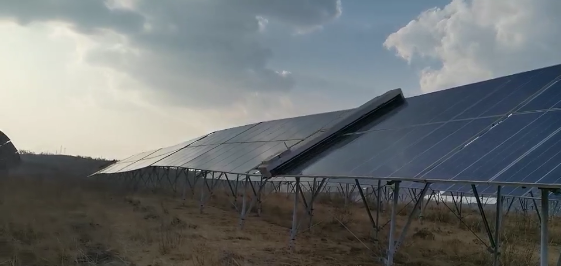Photovoltaic cleaning robots have emerged as essential tools for maintaining the efficiency of solar panels, particularly in varying climate conditions. Their performance is significantly influenced by several critical factors, including temperature, irradiance, environmental conditions, charging systems, and mechanical structure. This article explores how photovoltaic robots adapt to different climates to enhance solar energy generation.

1. Impact of Temperature on Performance
High-Temperature Climates
In humid and hot climates, photovoltaic systems operate at elevated temperatures, typically ranging between 25°C and 35°C. High temperatures can lead to a reduction in the efficiency of solar panels. Therefore, the cleaning capability of photovoltaic robots becomes crucial in these environments. Regular cleaning can significantly improve energy output, ensuring optimal performance of the solar modules.
Low-Temperature Climates
Conversely, in high-altitude regions, photovoltaic modules may function at lower temperatures, generally between -5°C and 10°C. Low temperatures can cause solar panels to enter protective modes, hindering their normal charge and discharge cycles. To address this, photovoltaic robots are equipped with battery heating functions, utilizing lithium battery heating films to maintain operational temperatures, thus ensuring reliable functionality even in cold environments.
2. Effects of Irradiance
High Irradiance Climates
In subtropical arid zones and high-altitude regions, solar irradiance levels are typically optimal, leading to higher solar panel efficiency. For instance, solar modules in arid regions may experience temperatures between 25°C and 45°C, and their annual efficiency can exceed that of humid regions by up to 15%. In such conditions, the cleaning efficiency of photovoltaic robots directly affects the energy output of these systems.
Low Irradiance Climates
On the other hand, areas characterized by temperate coastal or continental climates often have lower irradiance levels. In these regions, the efficiency of photovoltaic modules drops, and the temperature ranges vary significantly. The cleaning performance of photovoltaic robots remains crucial in these environments, as maintaining clean panels can optimize the utilization of limited sunlight and enhance energy efficiency.
3. Influence of Environmental Factors
Sandy and Dusty Regions
In deserts or arid plains, dust accumulation on solar panels can pose significant challenges, especially during spring and autumn. Automated cleaning robots can effectively manage dust without water, achieving cleaning rates of over 90%. This not only boosts the energy output of photovoltaic systems but also reduces cleaning costs.
Vùng ẩm ướt
In humid climates, photovoltaic modules can become contaminated with debris, such as leaves and bird droppings. These contaminants can reduce transparency and interfere with the heat transfer of the panels, impacting energy generation. Photovoltaic robots play a vital role in removing these pollutants promptly, helping maintain panel cleanliness and efficiency.
4. Charging System Adaptability
Sunny Weather
In sunny conditions, photovoltaic robots can use solar panels for self-charging, reducing dependence on external power sources. This self-sufficiency enhances operational flexibility and efficiency.
Overcast Conditions
During extended periods of low light or at night, when solar panels are insufficient for charging, photovoltaic robots must rely on external power sources. To accommodate this, designs incorporate charging connectors equipped with conductive springs and heating elements, which can thaw ice in low temperatures, ensuring reliable charging contact points.

5. Mechanical Structure Adaptability
Variable Installation Angles
Photovoltaic robots are designed with track-based structures that can navigate installation angles ranging from 0° to 90°. This versatility allows them to meet the cleaning requirements of solar panels regardless of their tilt.
Địa hình phức tạp
In areas with complicated terrain featuring distributed solar panel installations, photovoltaic robots are capable of autonomously navigating up and down panel arrays, minimizing the need for human intervention. Enhanced stability features, such as anti-tipping wheels and high-friction tires, further ensure operational reliability even in challenging weather conditions.
Phần kết luận
In summary, the performance of photovoltaic robots varies significantly across different climate conditions due to factors such as temperature, irradiance, environmental influences, charging systems, and mechanical adaptability. By optimizing their design, these robots can effectively and safely perform cleaning tasks in diverse climates, ultimately enhancing the energy efficiency of photovoltaic systems. As solar technology continues to evolve, so too will the capabilities of photovoltaic robots, ensuring they remain integral to sustainable energy solutions worldwide.